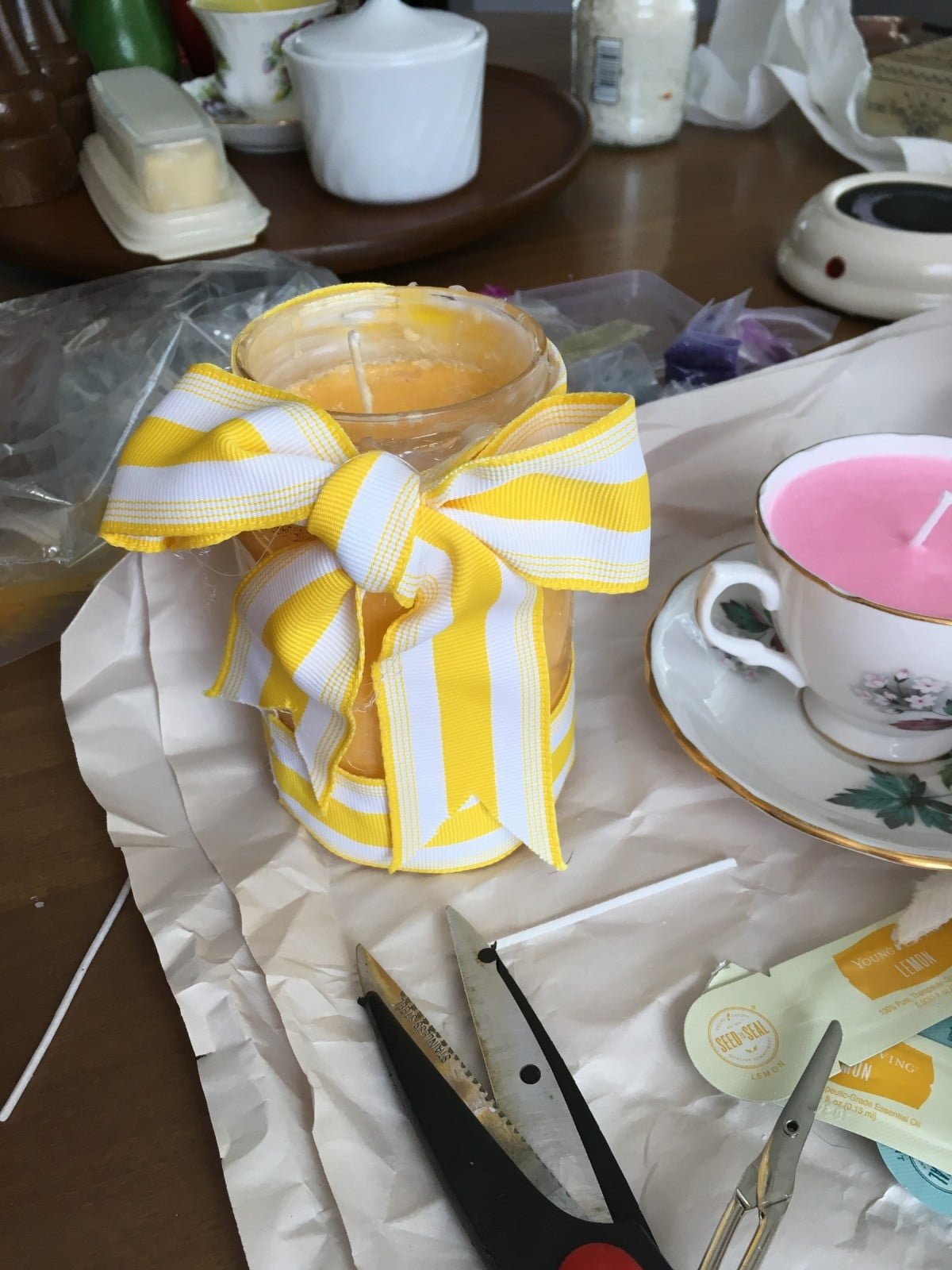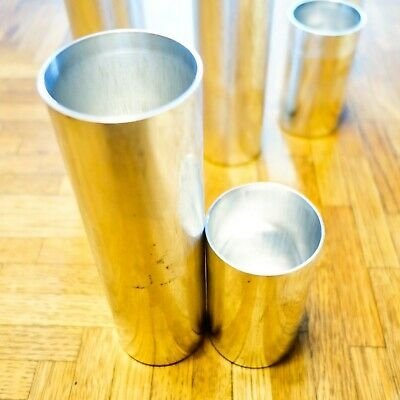Introduction
Candle making is an enjoyable and unique craft which can help to create beautiful homemade candles for special occasions as well as simply providing a warm and inviting atmosphere. There are two popular materials for candle making: Soy wax and beeswax. Each has its own unique benefits.
Soy wax, made from animal fats and plant oils, provides an environmentally friendly solution for those looking to reduce their ecological footprint. It is renewable and biodegradable, with negative impacts to the environment being minimal. Additionally, it is low in soot combustion, meaning less airborne particles that could damage walls or carpets when burning. It has a lower melting point than paraffin wax, giving off a warmer glow when lit. Soy also provides excellent performance over time ” candles made with soy will typically last 50% longer than paraffin wax candles. Unfortunately soy wax is not naturally fragrant so it may be necessary to add scent purchased separately in order to provide aroma when burning them.
Beeswax is derived from honeycombs that have been constructed by Worker Bees series of hexagonal cavities containing the waxy material they have produced using nectar from flowers which carries pollen into the hive allowing queens and drones (males) to feed on it’s contents. Beeswax itself has many useful qualities such as producing a brighter flame when lit, providing an ambient light as well as filling the room with natural aromas due its lack of synthetic fragrance compounds that are often used in other types of candles . Additionally this product will give longer burn times compared to most other candlemaking materials available in the market today; certain formulations can burn up three times longer than paraffin depending on their composition employed during craftsmanship making them great value for money for customers seeking such products. Furthermore beeswax has antiseptic properties which supposedly aid people who suffer from allergies caused by smoke inhalation or even dust mites due its filtering quality due to releasing negative ions while burning offering users some health benefits if they decide they wish to use this type of material rather than other more ascetic compositions.
History of Soy Candles & Benefits
Soy candles have been around since the early 1990s and have become increasingly popular due to their numerous benefits. Soy wax is a vegetable wax made from the oil of soybeans. It is an eco-friendly, renewable resource that has a much lower melting point than other waxes, which means it will burn for a significantly longer period of time with less soot and smoke. It also provides a pleasant aroma with no added fragrance meaning you can get the natural smell of your chosen essential oils or fragrances. Furthermore, soy candles can be washed away easily with hot water, making them great for multi-purpose use such as in bathrooms and kitchens.
In comparison to beeswax candles which are made from the cells found in honeycombs, soy candles also offer more convenience since they don’t require any special equipment or skills to make them. Additionally, beeswax involves harvesting materials from wild honeybees which could disrupt the ecosystem whereas soy is harvested in a similar way as other crops like corn or wheat, leaving less environmental impact and disruption to nature. Lastly, many people who suffer from allergies appreciate soy candles since they don’t release any pollen particles into the air like beeswax does.
History of Beeswax Candles & Benefits
Beeswax has been used for centuries to make candles. The earliest recorded beeswax candles were found in Egyptian pyramids dating back to 3000 BC. For hundreds of years, beeswax candles have been the preferred candle choice of royals and nobles. While having a rich and long history, beeswax candles offer many practical benefits as well.
Beeswax produces a beautiful, warm glow that is larger and brighter than other waxes such as soy. It is also known for producing a pleasant aroma while burning, sometimes even smelling like honey. Additionally, beeswax emits negative ions into the air when burning due to its own natural properties, which can help to purify the air we breathe and remove dust particles in our environment. This is why many people opt to burn beeswax candles while meditating or doing certain energy work as it can improve the overall atmosphere in the room. Beeswax is also non-toxic so it is much healthier for humans than paraffin waxes which may release harmful toxins when burning. Since it burns slowly, at a higher melting point than other waxes, beeswax can often burn for hours on end resulting in fewer relights making them a great deal more economical than other types of wax that may need frequent replacing or relighting.
Scent Profiles of Soy & Beeswax Candles
The scent profiles of soy and beeswax candles will vary depending on the type of wax used and the fragrance oils that are added. Soy candles tend to give off a sweeter, more subtle scent compared to beeswax candles that tend to be more robust and deep. Soy candles can be made without any added scent or with essential oil blends for a stronger aromatherapy experience. Beeswax, on the other hand, produces a natural aroma which some find may have a faint honey-like smell. Depending on the type of fragrance oil used, all types of scents can be achieved when making either soy or beeswax candles including floral, herbal or modern contemporary fragrances like citrus, musk or patchouli. When choosing between soy and beeswax for candle making projects it mainly comes down to personal preference as there is no clear winner in terms of which wax provides better scent than the other.
Burning Performance & Cost Comparison
When attempting to compare the burning performance of soy wax and beeswax, there are several factors which must be taken into account. Firstly, a lower melting point means that soy wax burns cooler than beeswax; this can help to extend the burn time of candles in general. Secondly, soy wax is more likely to produce more smoke than beeswax when burned, which can result in quicker extinguishing of the flame and uneven burning. Finally, beeswax has a slightly higher melting point than soy wax and is less prone to producing smoke when burned.
The cost comparison between soy wax and beeswax can vary greatly depending on several factors. Generally speaking, however, soy wax tends to offer better value for money thanks to its larger availability at competitive prices versus beeswax which often carries a higher price tag due to its scarcity and extraction methods from natural sources such as honeycombs or beehives. In terms of long-term value, it is worth noting that beeswax candles can provide longer burning times (upwards of 25 hours compared with the average 12-15 hour lifetime of soy wax candles).
Natural Dyes & Colorants for Soy & Beeswax
When considering the type of wax to use while candle making, soy and beeswax both have their advantages and drawbacks. Soy candles are typically cheaper to make than those made with bee’s wax. They also offer a longer burn time, burn cleaner, and release less soot into the atmosphere. However, soy candles often release scent more slowly than those made with beeswax. Soy can also be harder to work with due to its need to cool gradually in order to create desired shapes or textures.
Beeswax candles, on the other hand, provide a beautiful aroma when burned and are generally more complex in their scents than soy candles are. Beeswax is also easier to work with due to its malleability during cooling and requires no preheating in order for it maintain shape. Moreover, beeswax makes for a beautiful container candle as it allows light and shadows from natural flame dancing over its surface. Its only major downside is that it is more expensive than soy wax.
When using either wax type for candle making natural dyes & colorants such as sunflower oil may be added in order to create different colours. Both types of wax may also benefit from the addition of essential oils or fragrances in order to create pleasing aromas when lit. Beeswax may require additional heat when adding these substances in order for them to properly integrate into the mixture. Nowadays ‘natural’ food grade colouring pastes can be purchased online or at craft stores with which many different scents, colours & textures can be created with either wax base!
Environmental Impact Comparison
The environmental impact of candle making with soy vs beeswax depends on many factors. Beeswax is generally considered to be the more sustainable option since, when sourced ethically and sustainably, it helps to protect bee populations and promote biodiversity. Conversely, while soy waxes are made from renewable resources and are therefore somewhat more environmentally friendly than typical petroleum based paraffin waxes, they still have their drawbacks. For instance, some producers genetically modify the crops used to produce soy wax which can lead to negative impacts on the environment including water contamination and destruction of crucial habitats for wildlife. Additionally, agricultural production, particularly in large-scale operations has historically been linked to air pollution due to increased emissions of methane, nitrous oxide and carbon dioxide.
When considering the two types of wax for candle making there are other elements that need to be taken into account beyond just environmental impact. For example, when it comes down to producing a safe-burning product and getting maximum scent throw or longevity out of a candle Wax Type A may be much better than Wax Type B even if one type gives off higher emissions when burned. Ultimately whichever type of wax one opts for will depend on personal preference as well as the needs of their own particular business.
Conclusion
When deciding which type of candles to use in your home, there are several factors to consider. The two most popular types of candles are soy and beeswax. Soy candles burn cleanly and do not produce soot, making them a great option for people who suffer from allergies or asthma. Soy candles also last longer than beeswax ones, but they are more expensive. On the other hand, beeswax burns without releasing toxins into the air while producing a pleasant scent. It is also less expensive than soy wax and tends to last only slightly shorter than soy wax candles.
In conclusion, when deciding which candle is best for your home one should consider their individual preference within the context of their budget and any potential allergies or sensitivities that might be present in their home environment. If you don’t have allergies or sensitivities in your home, then either option may be suitable depending on what scent you enjoy most and whether you prefer a long burning time with slightly higher cost for soy wax or slightly shorter burning time with less cost associated with beeswax. After considering all these factors, it becomes easier to decide which candle will suit your needs best.
Resources/References
Candle making with soy wax and beeswax is becoming increasingly popular due to their natural properties. While both types of wax have their own unique qualities, there are some key differences between them.
Soy wax is a vegetable-based wax that burns cleanly, without the presence of smoke or soot. It is also typically less expensive than beeswax. However, it may not hold scent as well as beeswax candles do. Soy wax also has a lower melting point, so it will melt faster when lit.
Beeswax is a natural, renewable resource which can be harvested without harming the bee colony. As such, it is seen by many as an ethically sound choice for candle makers. Beeswax burns at a higher temperature than soy wax does, meaning that the candles made from beeswax tend to last longer before burning out. Furthermore, the scent of a beeswax candle lingers in the air for longer than that of the soy candle alternative.
To make an informed decision when choosing a type of wax for your candle making project, you should become familiar with all of the properties associated with each type of wax mentioned above as well as consider any safety and health concerns for anyone who will come into contact with your finished product (e.g., if you plan to use fragrances in your candles). Additionally, research sustainability standards associated with different suppliers”like ecocert or Rainforest Alliance certification”to select one that suits your values best and provides quality materials to use in the production process; this step is especially important if you are using animal by-products like honey or beeswax in your project!
When considering resources/references to expand upon this text on candle making soy vs beeswax:
1) National Candle Association – https://candles.org/education/soy-vs-beeswax/. This website contains detailed information on benefits and precautions candidates should keep in mind when working with both soy wax and beeswax for candle making projects.
2) The Homestead Life – https://thehomesteadlife.com/diy-bee-friendly-candle/. This article offers practical tips on how to make eco-friendly candles from scratch using upcycled materials like reused jars and compostable wicks which are free from metal cores; if you’re looking for recipes specifically designed for ecofriendly home décor items then this articles offers some great advice!
3) Wax Works Ltd – https://www Baworksltd co uk/configurators/1/. This website features publicly available data on various candle wicks to help users gain insight into how they might affect singing performance based on their shape & texture; other comparative charts can help readers understand the advantages & disadvantages associated with each variety including burn time or fragrance hold ability related benefits which could be of greatest importance in certain creative applications.

Welcome to my candle making blog! In this blog, I will be sharing my tips and tricks for making candles. I will also be sharing some of my favorite recipes.





